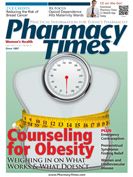Publication
Article
Pharmacy Times
Is ED Prescribing Our #1 Abuse Problem?
Author(s):
Prescriptions for controlled substances from emergency department physicians are a major source of diversion.
Prescriptions for controlled substances from emergency department physicians are a major source of diversion.
A recent 2-day conference in Ohio prompted Governor John R. Kasich to announce an agreement that had been made with the state’s major medical associations to limit prescribing of controlled substances in the emergency department (ED). These guidelines would be just that—guidelines—but they were meant to reduce the prescribing of controlled substances by ED physicians.
“We’re not giving you this stuff (painkillers) willy-nilly anymore,” said Governor Kasich during his oration to the audience and press. This agreement is part of Ohio’s push to reduce prescription drug overdose deaths, something that occurs every day to at least 4 Ohio residents who die of an unintended prescription drug overdose.
The conference attendees insinuated that ED prescribing was a major contribution to abuse and diversion of pharmaceuticals in the state. They also said they wanted to help the ED staff practice medicine more appropriately while sending a message to drug seekers that this issue is being taken seriously.
The Root of the Problem
I have no problem in taking prescription drug abuse reduction seriously, but I also feel that we need to look at each segment of drug diversion to analyze the situation to see the extent of the problem and how it can be addressed. It begs the question as to whether ED prescribing was actually one of the root causes of the prescription drug problem in Ohio.
ED diversion has been a problem for decades. Every ED in the country is visited by countless drug seekers who are experts when it comes to deception in order to get their medications. If you doubt this, spend some time with ED personnel who deal with these folks each and every day or the late-night pharmacists who fill the prescriptions.
Over the years, I have seen these folks abuse themselves by aggravating root canal work, slamming car doors on their fingers, inserting objects into open wounds, and burning and cutting their testicles just to get a few hydrocodone or oxycodone tablets. Others have realized long ago that some symptoms such as back pain are difficult, if not impossible, for the staff to determine, and will likely yield 4 or 5 pain pills.
Sending a Message
The ED staffs in the United States have a huge problem in trying to determine who has legitimate pain and needs medication, and who is scamming them and needs to be thrown out the door! I have known several ED physicians who were as good as any veteran drug diversion investigator in weeding out these characters. When they did discover a deception, they didn’t hesitate to call our office to report the drug crime.
These health care professionals understood that in addition to doing the right thing by addressing diversion, they sent a message to the rest of the drug-seeking population that their ED was there for treating legitimate pain, and if you tried to scam them, you risked going to jail.
In addition to recognizing the countless red flags of a prescription drug diverter in the ED, these prescribers already limit the dosage units of painkillers for 1 patient to a 1-to-3-day supply. Therefore, getting more than a handful of hydrocodone or oxycodone from the EDs in this country is an almost impossible task. These realities made me wonder why we spent a whole day in Ohio to discuss a problem that our health professionals were already very aware of and were by and large doing an outstanding job of combating by limiting the prescribing of these drugs to ED patients.
Also, knowing that those individuals scamming the EDs are only obtaining a handful of pills on their best day, what effect do they have on the overall diversion issue? Not only are the numbers small, but the characters who doctor shop EDs are primarily addicts. Addicts that consume these pharmaceuticals almost as quickly as they fill the script at the pharmacy, sometimes before they can get out of the parking lot!
Legitimate Pain Patients
My point is that ED diversion is a significant problem, no doubt. However, no one needs to tell the ED staff that they need to be vigilant and try to reduce the number of pain pills being prescribed in the ED. They already know this, but they also know that the EDs are a place where legitimate pain patients seek good medical care, which sometimes means prescription analgesics. Determining the difference between the scammer and legitimate patient is not always an easy task, but it is an important one. Many of you work in all-night pharmacies and see these people in your pharmacy. I am interested in your opinion as to ED prescribing practices and the percentage of suspicious patients you see in your place of work that come from the ED. Please send me your experiences!
Cmdr Burke is a 40-year veteran of law enforcement and the current president of the National Association of Drug Diversion Investigators. He can be reached by e-mail at [email protected], via the website www.rxdiversion.com, or by phone at 513-336-0070.







